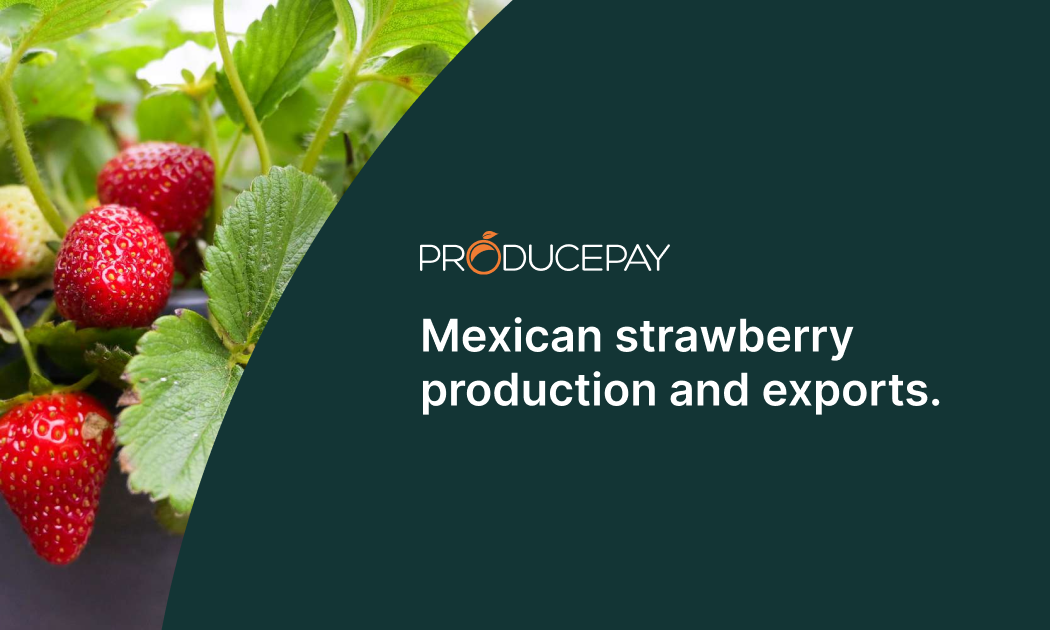
Mexican strawberry production and exports.
World strawberry production presented an average annual variation of +3.6% between 2011 and 2020, although in 2020 it had a decrease of 1.6% with respect to 2019, according to FAOSTAT, going from 9,009,629 to 8,861,381 tons, with Mexico being the 4th largest producer with 557,514 tons, as well as the 2nd largest exporter with 149,461 tons.
Production
In Mexico, 95.4% of the total strawberry is produced in 3 states: Michoacán, Baja California and Guanajuato, being a crop that is harvested almost all year round, since the season of this fruit goes from November to July, having minimal production in the months of August, September and October, due to the change of season.
The production peak clearly identified, starting with a slight increase in volume during the spring and a considerable increase in May and June, months that in 2020 concentrated 44.4% of total production.
Subsequently, in July there is a sharp drop in production, having historically this same trend for the last few years.
In addition, strawberry is a crop in which 55.2% of the national production takes place in the open air, while the remaining 44.8% is protected agriculture, being the macro tunnel the most used structure in the country, with 40.9% of the total area, which is interesting.
In fact, strawberry is one of the crops with the highest percentage of protected agriculture, however, as the fruit is highly sensitive to humidity and climatic changes, yields can be greatly affected in open air production.
Another important point is that only 1.0% of the total produced in 2020 was organic, so there is an important opportunity for farmers who want to work under an organic production system.
Exports
The main destination for Mexican strawberry exports is the United States, where 99.4% of the total volume exported during the period from January to November 2021 (214,443 tons) was sent, while in terms of value it represented 99.8% of the total.
The other 20 countries to which Mexican strawberries were exported only accounted for 1,328 tons and 6.4 million dollars, so there is really no alternative market for this product, which is worrying.
The peak export season runs from December to April, with the highest volumes in the months of February, March and April, a contribution that complements production in the United States, which takes place mainly in California and Florida, although as the highest production in California occurs from March to July, competition for the market arises.
However, in 2020, annual per capita consumption of fresh strawberries increased considerably to 8.5 pounds (3.9 kilograms), after 6 years of slight but continuous declines. This is excellent news, as it could indicate that the market is ready to absorb higher volumes, which would imply that there is room for both local production and imports.
Finally, it should be noted that in 2020 the volume of peak production was lower than in previous years, this volume moving towards the end of the year, which could indicate that producers are looking to advance their production and exports, and thus avoid competing directly with California and Florida.
Conclusion
Mexico is an important strawberry producer, and this crop is very important for the country in economic terms, since domestic production covers the demand of the domestic market and, at the same time, a significant volume is exported to the United States, where the long-term objective should be to complement the seasonality of California and Florida, or else there will continue to be strong competition with those regions.
However, if the U.S. market is ready to absorb more fresh strawberry volume, then there would be no problem, even if Mexico and the U.S. have their peak production in more or less the same months, although the data seems to indicate that Mexican growers are looking to move production and exports forward a bit to obtain better prices.
Fuentes:
FAO-FAOSTAT. Crops and livestock products – strawberry
SADER-SIAP. Datos abiertos de producción agrícola – fresa
SADER-SIAP. Panorama Agroalimentario – fresa

